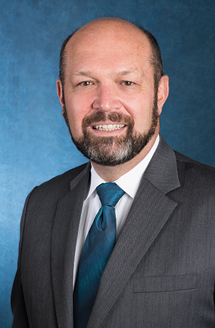
Richard C. Friedberg, MD, PhD
With CAP ’03 in San Diego, we began to define our own space. The goal of transition to an independent annual meeting was to accommodate leading-edge pathologist education and encourage personal interaction between members in practices across the country. We set out to create a context for one-on-one conversations about the big picture questions in our specialty because we knew the right setting would influence the quality of those encounters.
Twelve years later, the faculty had grown to include, at CAP ’15 in Nashville, 145 renowned experts representing every major pathology discipline. We could learn molecular diagnostics in the morning and join a lunchtime roundtable about how to select a reference laboratory for next-generation sequencing.
This year, we also began a two-year conversation about how we can best adapt our practices to meet the needs of a more patient-centered culture. We knew that if pathologists collaborated to find effective ways to incorporate that perspective into policies and day-to-day decision-making, the patient safety benefits would tumble into place. So we talked about that, too.
CAP ’15 opened with an outstanding scientific plenary on shared decision-making in prostate cancer screening, diagnosis, and treatment. An expert panel (Jonathan I. Epstein, MD, John L. Gore, MD, and moderator M. Elizabeth Hammond, MD) reviewed the recent consensus statement defining the pathologist’s role in determining the eligibility of patients with low-risk prostate cancer for management via active surveillance (Amin MB, et al. Arch Pathol Lab Med. 2014;138:1387–1405). The consensus statement identifies criteria for evaluating treatment options that can then be discussed with patients.
We are moving away from acute intervention and toward long-term management strategies for the care of some cancer patients. Active surveillance is an emerging method to which patients will react differently and about which reasonable people may form different opinions. This is progress, I think, but we need to be careful about how the concept is explained to patients, and we need to ensure it is fully explored with them. When we talk about opportunities to replace acute strategies with a management framework, it may fall to the pathologist to raise questions that take the whole patient into consideration.
The panel did that extremely well, prompting one attendee, Gary Horowitz, MD (who chairs the CAP Chemistry Resource Committee), to say that “even as a clinical pathologist” he had learned a great deal about the latest thinking in the field. “Attending this CAP session made me especially proud to be a member,” he wrote in an email to Dr. Hammond.
The opening plenary has become such a successful tradition that the 16-member CAP Curriculum Committee chaired by Terence J. Colgan, MD, decided last year to add a special evening plenary session featuring a renowned and seasoned pathologist’s perspective on our field. This year, Richard J. Zaino, MD, an emeritus professor of pathology at the Penn State Milton S. Hershey Medical Center and past chair of the National Cancer Institute-sponsored cooperative Gynecologic Oncology Group, presented an overview of the United States’ “war on cancer” from the viewpoint of a gynecologic pathologist.
Our spotlight event this year featured Bennet I. Omalu, MD, MBA, MPH, an enthusiastic forensic neuropathologist. Dr Omalu’s journey to understand the etiology of a progressive neurologic disorder in victims of brain trauma will be captured in Concussion, a film starring Will Smith that will premiere in theaters next month.
As these brief snapshots show, the promise of CAP ’03 has been realized many times over. I cannot overstate the psychological boost of a few days of immersion with colleagues from distant and different practice settings. Residents attend in great numbers and clearly enjoy it. In the scientific courses (many with self-assessment modules), coding workshops, video microscopy tutorials, and crowded plenary sessions, we provoke, encourage, and support one another, forming professional ties that endure year after year. It’s our tribe.
There is wide geographic variation in medical practice, and pathology is no exception. I can think of no better place than the annual meeting to learn about national trends—which is why so many of us overbook and have no time for lunch. Everyone is running from one session to the next and comparing schedules to see when they can sit down and catch up.
CAP ’15 provided a fertile context for learning, mentorship, respectful disagreement, and lively discussion. It nourished our optimism, boosted our energy, and imparted knowledge and skills we would bring home to patients, partners, and laboratory staff.
The choices we make and the company we keep will determine where we go, the risks we take, the intuitions we develop, and the energies we contribute. Experiences like CAP ’15 ensure that we remain under construction, always improving, always reaching for more. With luck and hard work, the growing never ends.
Next year’s annual meeting will convene Sept. 25–28 in Las Vegas. As always, many courses will be quickly oversubscribed. Please mark your calendar now and plan to join us.
[hr]
Dr. Friedberg welcomes communication from CAP members. Write to him at president@cap.org.
 CAP TODAY Pathology/Laboratory Medicine/Laboratory Management
CAP TODAY Pathology/Laboratory Medicine/Laboratory Management
